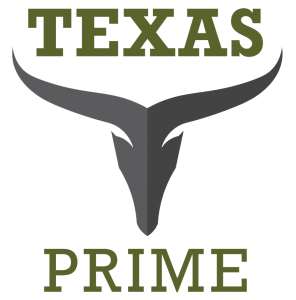People are clamoring for grass-fed beef, and many want to know more about why this product is so amazing, what makes it different from conventional beef, and why some grass-fed beef is much better tasting than other grass-fed brands. To help you, here are some answers to the questions we are asked at Tallgrass Beef Company most often. Tallgrass Beef grass-fed beef is:
- 100% Grass-fed, free range, never confined to feed lots
- No fed antibiotics
- No added hormones
- Natural- no artificial preservatives or additives
- Marbles equivalent to USDA Choice
- Gluten free
- Part of the challenge in raising grass-fed beef is providing year round consistent quality. Tallgrass Beef Company provides consistent quality 365 days a year. Our cattle dine year round on lush grasses like nature intended. Only cattle that meet our strict standards are selected to become Tallgrass Beef. Our standards include grading based on the condition of the animal (it’s conformation and marbling of the meat produced) and the breed of the animal (some breeds fatten and marble better on grasses than others).If the beef is not perfect than it does not become Tallgrass Beef.
There is a variety of grasses cattle munch on in pastures. Predominantly rye grass with clover and other broad leaf grasses in the spring and summer comprise their main diet. If needed, in the winter we supplement with leafy feed crops (chicory, brassicas) or hay that is harvested and stored from the summer.
DDG’s are Dry Distiller’s Grains, the corn that has bee processed in a refining process that removes the starch, leaving only the dry matter from the corn. There is no starch and it technically qualifies as a grass-fed wedding supplement. Many producers use this in the feeding process, especially in areas where it is difficult to grow good grasses. It helps fatten the animals but has none of the benefits of real grass. We feel it is misleading. Our cattle are never fed DDG’s. Likewise, we never feed alfalfa pellets or manufactured feeds of any kind.
Grass-fed beef’s flavor profile is influenced by what the animals eat in the pasture, especially in the months prior to harvesting and processing. Most beef in the US is raised on grain which has a less substantial flavor profile than grass-fed beef. Beef connoisseurs consider grass-fed beef to have a richer, fuller, nuttier, more robust beef flavor.
Grass-fed beef is much healthier than convention, grain fed beef. Grass-fed beef is:
• Higher in Vitamin E, Vitamin C, Beta Carotene
• Higher in CLA (a healthy fat)
• Lower in saturated bad fats, cholesterol, and calories
• Higher ration of Omega-3 to Omega-6 fatty acids (higher amounts of Omega-3 are important in a a healthy diet and help reduce the risk of many diseases, the FDA recognizes the value of Omega-3 in reducing the risk of heart disease).
Our cattle are treated like royalty! Grass-fed animals range freely in pastures and are allowed to behave naturally in the manner they evolved. They are free from the stress factors imposed on confined animals. Our cattle are happy! The free-range lifestyle and diet means there is less requirement of daily intervention and treatment such as antibiotic regimens. Our rancher in the US and New Zealand know that their animals thrive on well managed pastures and they are excellent stewards of the land. In the US we follow the Dr. Temple Grandin protocols for the humane raising and harvesting of animals. Our cattle from New Zealand are subject to their stringent animal welfare codes. The Animal Welfare Act requires that animals are cared for and given the “five freedoms”:
- Proper and sufficient food and water
- Adequate shelter
- The opportunity it display normal patterns of behavior
- Physical handling in a way that minimizes the likelihood of unreasonable or unnecessary pain or distress
- Protection from and rapid diagnosis of any injury or disease
Because of its remote geographic location, there are no natural predators of farm animals in New Zealand and animals graze freely without threat.
The succulence and “bite” of all beef varieties depends on the condition of the animal at harvest time. Tenderness and juiciness can be closely associate with intramuscular fat (marbling). While some grass-fed beef can be lean and tough, it does not have to be! Beef selected for Tallgrass Beef Company is graded for marbling under an internationally recognized system to determine marble scores. Marble scores of 2-4 are the equivalent of USDA Choice-Prime.
Grass-fed beef for Tallgrass Beef Company comes from family farmers and ranchers in the United States and New Zealand. The US and New Zealand have some of the best conditions for raising grass-fed cattle on a year round basis.
Yes, but this can be misleading. The only saturated fat in grass-fed beef is “good” fat called conjugated linoleic acid (CLA) which can help reduce the risk of heart disease, diabetes, and obesity. It is actually the only kind of saturated fat that is considered healthy for you! Because nutrition labeling regulations do not distinguish between good and bad saturated fats, CLA is reported under the saturated fat value in the nutrition information labeling panels on products in stores.
Our grass-fed cattle are never confined (in the US or New Zealand). The conditions in the US and New Zealand are comfortable for the animals year round.
With strict production protocols and the fact our cattle are never fed anything but grasses, BSE is not a concern for our cattle produced in the US. Tallgrass Beef cattle from New Zealand are free from BSE as well. New Zealand is a small island nation, they have a very stringent biosecurity program and quarantine regulations. There has never been a case of BSE in New Zealand.
It takes 18 to 24 months for a grass-fed animal to develop natural “marbling” or intra-muscular fat that, while leaner, gives Tallgrass beef its unique taste. Corn-fed beef can be fattened quicker, in 14 to 16 months, on a cheaper food source—corn.
Finishing cattle in feedlots is quicker and cheaper because the cattle are confined to pens or paddocks and fed a very high energy diet

 The grass-fed beef revolution is here, and Tallgrass Beef Company is leading the way. If you’re new here, we invite you to explore our site to learn the benefits of grass-fed beef, and why we believe our grass-fed beef is healthier.
The grass-fed beef revolution is here, and Tallgrass Beef Company is leading the way. If you’re new here, we invite you to explore our site to learn the benefits of grass-fed beef, and why we believe our grass-fed beef is healthier.